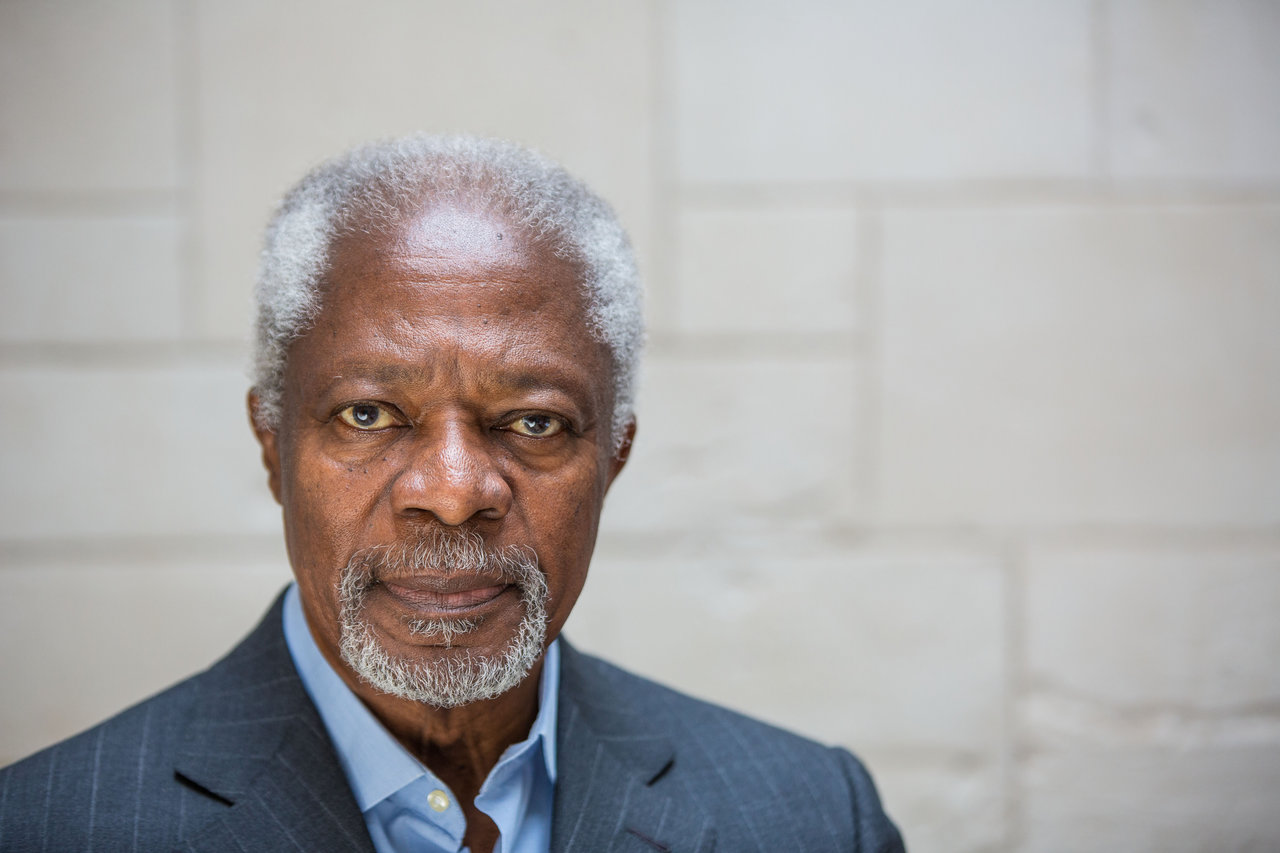Kofi Annan on the vision of a world free of landmines
Kofi Annan delivered these remarks at the High Level Pledging conference on the landmine convention in Geneva on 2 March 2016.
—————————————————–
Director-General Moller, Foreign Minister Munoz, distinguished panelists, friends and colleagues. Thank you for your warm welcome.
I am delighted to join you on the eve of the Ottawa Convention’s seventeenth anniversary to offer my encouragement to your efforts to make our world a more peaceful and less dangerous one.
Landmines and the explosive remnants of war are still a pernicious threat in many parts of the world.
The unimaginable hurt and suffering they cause is most often visited upon women, children and the innocent.
Their silent legacy of death and injury haunts societies long after conflict has ended.
They also create long-term displacement of entire communities, undermining efforts to build a lasting peace and the conditions for economic and social recovery.
In 1997 the international community responded with unprecedented multilateral cooperation and called for determined action to rid the world of landmines.
The signing of the Ottawa treaty was one of the highlights of my career at the United Nations.
It provided us with great hope, not only for the disarmament agenda, but for the power of multilateralism in a world facing challenges of increasing complexity.
To a large extent, that hope has been validated.
The determination of the States parties has made the Ottawa Treaty one of the great successes of international diplomacy.
And the mine action community has now grown to include thousands of organizations throughout the world encompassing the UN, civil society, business and of course most States.
Their work has largely halted the production and trade in landmines.
Collectively, States Parties have destroyed almost 50 million stockpiled antipersonnel mines.
Following the implementation of the Cartagena and Maputo Action Plans, many have made considerable progress in identifying the needs of victims and providing assistance.
And, all the time, new technologies are making it safer, easier, and more effective to clear communities of landmines.
This is- as this conference rightly suggests -the final stretch, but we are not there yet.
I was in Colombia last year to support the ongoing effort to end a conflict which has plagued that country for generations.
After so many years of violence and suffering, there is a cautious optimism that peace is within Colombia’s grasp.
But the thousands of landmines that remain in the ground cast a shadow over these hopes – with the potential to claim victims long after hostilities have ceased.
Colombia is not alone in this regard. In fact, few regions of the world can claim to be free of the threat of landmines.
It is often the last stretch that is most difficult, but the progress thus far attests to what can be achieved.
I hope this Pledging Conference will generate the resources necessary to take the required action at the international and national level.
And I hope we will see renewed dedication to ending the scourge of anti-personnel mines.
The vision of a world free of landmines by 2025 is one we all share.
We can and must make that happen.
If we do, it will be a great triumph of human solidarity and an enduring testimony to how we can work together to eradicate a terrible injustice to some of the world’s most vulnerable communities.
Let me wish you every success in your efforts.

